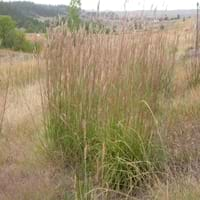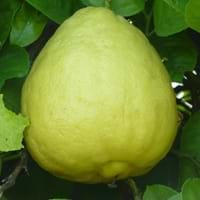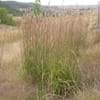Life Span
Perennial
Perennial
Origin
North America, United States, Northeastern United States, Mid-Atlantic United States, Southeastern United States, North-Central United States, Central United States, South-Central United States, Southwestern United States, Texas, Canada, Mexico
Hybrid origin, Asia
Types
Not Available
Not Available
Number of Varieties
Not Available
Habitat
meadows, Prairies, Riverbanks, Roadsides, Woods
Lawn
USDA Hardiness Zone
2-7
11-12
Sunset Zone
1a, 1b, 2a, 2b, 3a, 3b, 4, 5, 6, 7, 8, 9, 14, 15, 16, 17, 18, 19, 20, 21, 22, 23, 24
H1, H2, 8, 9, 12, 13, 14, 15, 16, 17, 18, 19, 20, 21, 22, 23, 24
Habit
Clump-Forming
Oval or Rounded
Flower Color
Purple
White, Red, Purple
Flower Color Modifier
Bicolor
Bicolor
Fruit Color
Not Available
Yellow, Yellow green
Leaf Color in Spring
Green
Dark Green
Leaf Color in Summer
Light Green
Dark Green
Leaf Color in Fall
Blue Green, Burgundy, Bronze
Dark Green
Leaf Color in Winter
Tan, Sandy Brown
Light Green
Leaf Shape
Grass like
Oval
Plant Season
Summer, Fall, Winter
Spring, Summer, Fall, Winter
Sunlight
Full Sun, Partial Sun
Full Sun, Partial Sun
Type of Soil
Loam, Sand
Loam, Sand
The pH of Soil
Neutral, Alkaline
Acidic, Neutral
Soil Drainage
Well drained
Well drained
Bloom Time
Late Summer, Early Fall, Fall
Indeterminate
Tolerances
Not Available
Drought
Where to Plant?
Container, Ground, Pot
Ground, Pot
How to Plant?
Seedlings
Cuttings, Grafting, Seedlings
Plant Maintenance
Medium
Medium
Watering Requirements
Average Water Needs, Do Not over Water, Medium
Reduce watering in winter, Water frequently while growing
In Summer
Lots of watering
Lots of watering
In Spring
Moderate
Moderate
In Winter
Average Water
Average Water
Soil pH
Neutral, Alkaline
Acidic, Neutral
Soil Type
Loam, Sand
Loam, Sand
Soil Drainage Capacity
Well drained
Well drained
Sun Exposure
Full Sun, Partial Sun
Full Sun, Partial Sun
Pruning
Remove damaged leaves, Remove dead branches, Remove dead leaves, Remove dead or diseased plant parts
Remove damaged leaves, Remove dead branches, Remove dead leaves
Fertilizers
All-Purpose Liquid Fertilizer
All-Purpose Liquid Fertilizer
Pests and Diseases
Red blotch
Leafminer
Plant Tolerance
Not Found
Drought
Flower Petal Number
Single
Single
Fragrant Bark/Stem
No
Yes
Foliage Texture
Medium
Medium
Foliage Sheen
Matte
Glossy
Attracts
Birds, Butterflies
Not Available
Allergy
Not Available
Anaphylaxis, Oral Allergy
Aesthetic Uses
Ground Cover, Landscape Designing, Showy Purposes
Bonsai
Beauty Benefits
Not Available
Not Available
Edible Uses
Insignificant
Yes
Environmental Uses
Air purification, Food for animals, Prevent Soil Erosion
Air purification
Medicinal Uses
Not Available
Astringent, Diuretic, Febrifuge
Part of Plant Used
Leaves, Stem
Fruits, Pulp, Tree trunks
Other Uses
Decoration Purposes, Food for animals
Cosmetics, Disinfectant, Edible syrup
Used As Indoor Plant
Insignificant
Yes
Used As Outdoor Plant
Yes
Yes
Garden Design
Cutflower, Dried Flower/Everlasting, Mixed Border, Screening / Wind Break, Wildflower
Container, Edible, Fruit / Fruit Tree, Houseplant, Topiary / Bonsai / Espalier, Tropical
Botanical Name
ANDROPOGON gerardii
CITRUS limon 'Ponderosa'
Common Name
Big Bluestem, Turkey Foot
Lemon, Ponderosa Lemon
In Hindi
Big Bluestem grass
Ponderosa Lemon
In German
Große Bartgras
Ponderosa Zitrone
In French
Barbon de Gérard herbe
Citron Ponderosa
In Spanish
hierba andropogon grande
Ponderosa Lemon
In Greek
Big BLUESTEM γρασίδι
Ponderosa Lemon
In Portuguese
Vetiver grande grama
Ponderosa Lemon
In Polish
Big Bluestem trawa
Ponderosa Lemon
In Latin
Big bluestem herba
Ponderosa Lemon
Phylum
Magnoliophyta
Not Available
Class
Lillosida
Magnoliopsida
Clade
Angiosperms, Commelinids, Monocots
Angiosperms, Eudicots, Rosids
Tribe
Not Available
Citreae
Subfamily
Not Available
Aurantioideae
Number of Species
Not Available
Season and Care of Big Bluestem and Ponderosa Lemon
Season and care of Big Bluestem and Ponderosa Lemon is important to know. While considering everything about Big Bluestem and Ponderosa Lemon Care, growing season is an essential factor. Big Bluestem season is Summer, Fall and Winter and Ponderosa Lemon season is Summer, Fall and Winter. The type of soil for Big Bluestem is Loam, Sand and for Ponderosa Lemon is Loam, Sand while the PH of soil for Big Bluestem is Neutral, Alkaline and for Ponderosa Lemon is Acidic, Neutral.
Big Bluestem and Ponderosa Lemon Physical Information
Big Bluestem and Ponderosa Lemon physical information is very important for comparison. Big Bluestem height is 38.10 cm and width 152.40 cm whereas Ponderosa Lemon height is 120.00 cm and width 150.00 cm. The color specification of Big Bluestem and Ponderosa Lemon are as follows:
Big Bluestem flower color: Purple
Big Bluestem leaf color: Green
Ponderosa Lemon flower color: White, Red and Purple
- Ponderosa Lemon leaf color: Dark Green
Care of Big Bluestem and Ponderosa Lemon
Care of Big Bluestem and Ponderosa Lemon include pruning, fertilizers, watering etc. Big Bluestem pruning is done Remove damaged leaves, Remove dead branches, Remove dead leaves and Remove dead or diseased plant parts and Ponderosa Lemon pruning is done Remove damaged leaves, Remove dead branches and Remove dead leaves. In summer Big Bluestem needs Lots of watering and in winter, it needs Average Water. Whereas, in summer Ponderosa Lemon needs Lots of watering and in winter, it needs Average Water.





